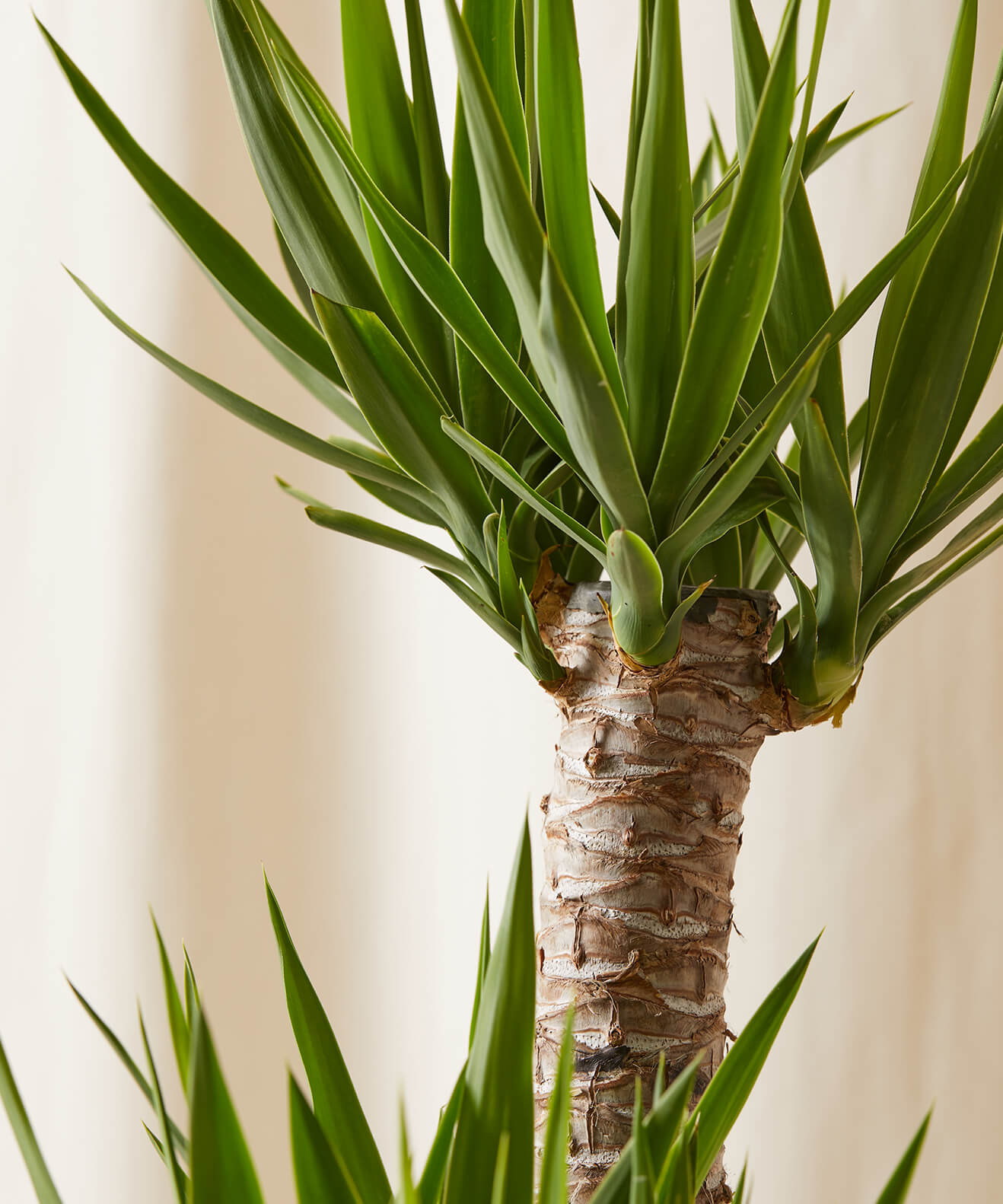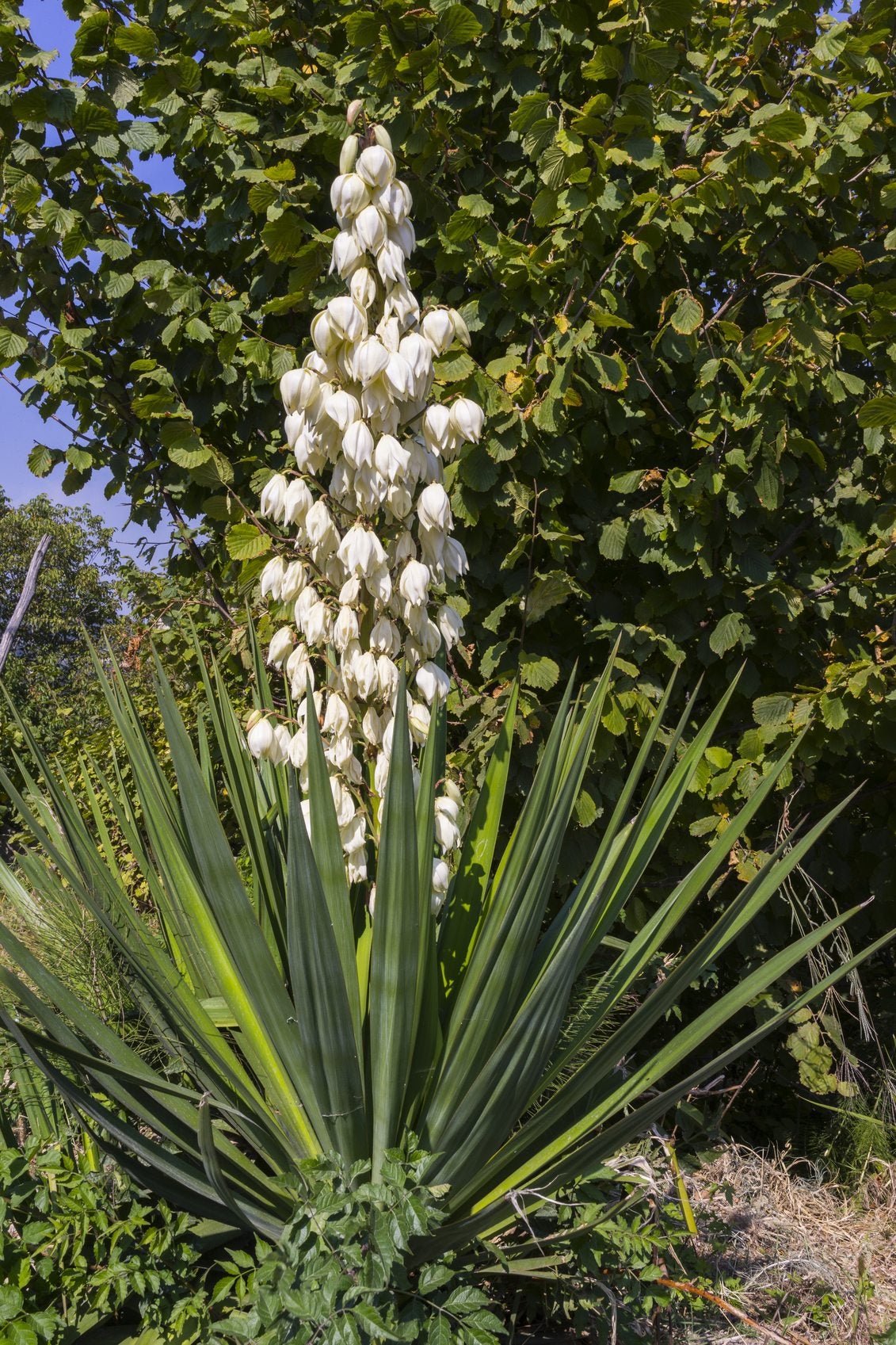The Yucca Plant
Yucca plants are a diverse group of evergreen perennials belonging to the Asparagaceae family. They are native to the arid regions of the Americas, particularly the southwestern United States, Mexico, and Central America. These resilient plants have adapted to harsh desert conditions, making them popular choices for drought-tolerant landscaping and indoor houseplants.
Physical Characteristics
Yucca plants exhibit a wide range of growth habits, from small, shrubby varieties to tall, tree-like specimens. They are characterized by their thick, sword-shaped leaves that emerge from a central rosette. The leaves can be smooth or serrated, depending on the species, and often have a sharp point at the tip.
Types of Yucca
There are numerous species of yucca plants, each with its own unique characteristics. Some of the most common types include:
Yucca Elephantipes (Spineless Yucca)

This popular houseplant is known for its thick, trunk-like base and large, arching leaves. It is relatively low-maintenance and can tolerate neglect.
Yucca Aloifolia (Spanish Dagger)
This species has long, stiff, and pointed leaves, earning it the name “Spanish Dagger.” It is a hardy plant that can withstand harsh conditions.
Yucca Filamentosa (Adam’s Needle)
This yucca forms clumps of sword-shaped leaves with thread-like filaments along the margins. It produces tall flower stalks with clusters of white, bell-shaped flowers.
Growing Yucca Plants
Yucca plants are relatively easy to grow, but they thrive in specific conditions. Here are some tips for growing yucca plants:
Light

Yucca plants prefer bright, indirect light. They can tolerate some direct sunlight, but prolonged exposure to intense sunlight can scorch their leaves.
Water
Yucca plants are drought-tolerant and should not be overwatered. Allow the soil to dry out completely between waterings. Overwatering can lead to root rot.
Soil
Yucca plants prefer well-draining soil. A cactus or succulent mix is ideal.
Temperature
Yucca plants prefer warm temperatures. They can tolerate some cold, but prolonged exposure to freezing temperatures can damage the plant.
Fertilizing

Yucca plants are low-maintenance and do not require frequent fertilizing. A balanced, slow-release fertilizer can be applied once or twice a year during the growing season.
Pests and Diseases
Yucca plants are generally resistant to pests and diseases. However, they can be susceptible to mealybugs and scale insects. These pests can be controlled with insecticidal soap or neem oil.
Propagation
Yucca plants can be propagated by seeds, stem cuttings, or offsets. Seeds can be sown in a well-draining potting mix and kept moist until germination. Stem cuttings can be rooted in water or soil. Offsets can be carefully removed from the parent plant and replanted in a pot.
Uses of Yucca
Yucca plants have been used for various purposes throughout history. Some of the most common uses include:

Ornamental Plants: Yucca plants are popular ornamental plants due to their unique appearance and low-maintenance nature.
Conclusion
Yucca plants are versatile and adaptable plants that can add a touch of the desert to any home or garden. With their unique appearance and low-maintenance requirements, yucca plants are a great choice for both experienced and novice gardeners. Whether you choose to grow a small houseplant or a large, tree-like specimen, yucca plants are sure to bring beauty and resilience to your space.
Yucca Plant

